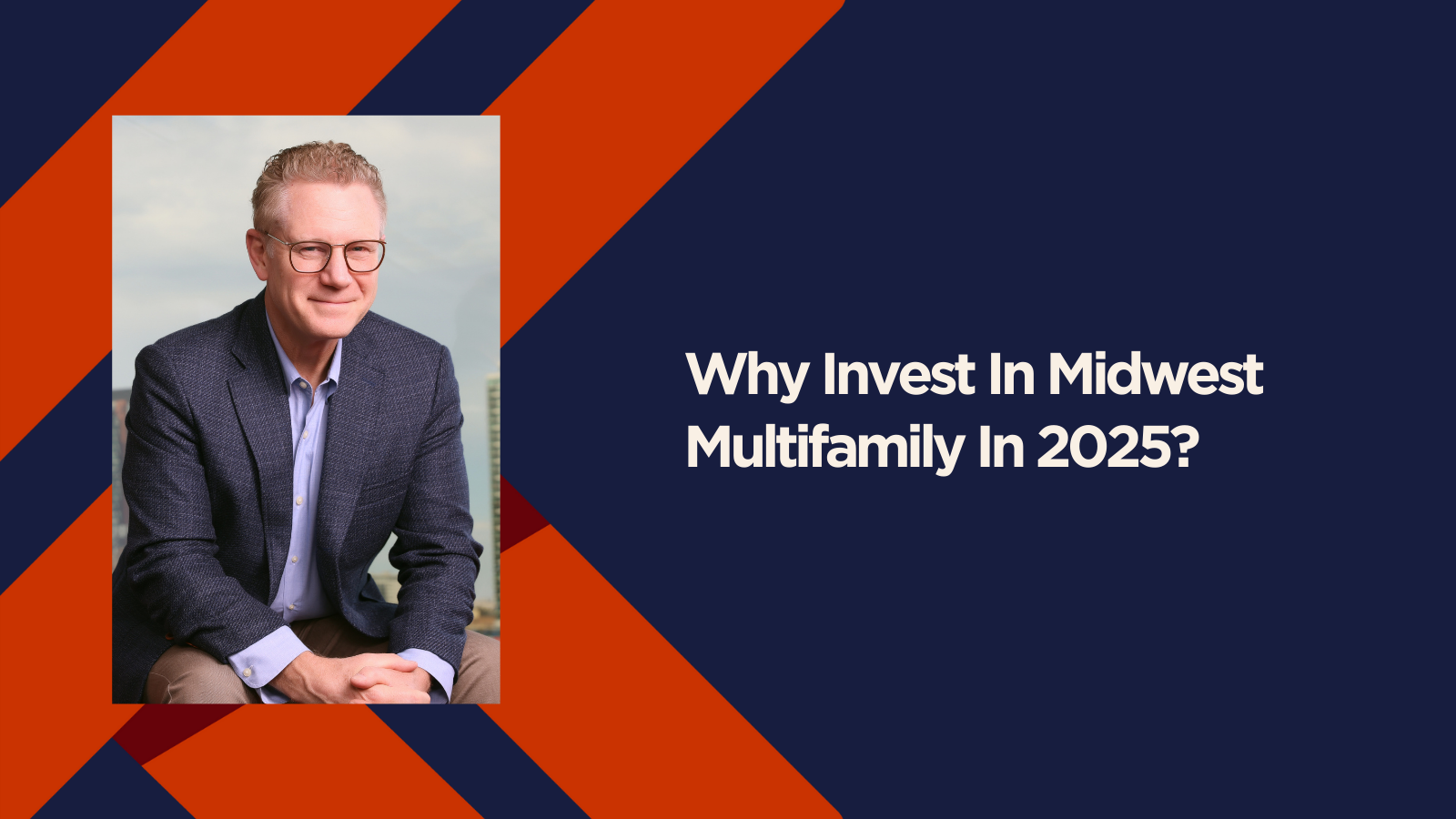07.11.25
Why Invest in Midwest Multifamily in 2025?

Multifamily real estate investment in the Midwest in 2025 presents a compelling opportunity, driven by strong fundamentals, favorable market dynamics, and emerging trends. Here’s an overview of the key trends and outlook:
Strong Rent Growth
Midwestern cities are experiencing some of the fastest rent increases in the nation. Cleveland leads with a 5.1% year-over-year rent growth, while other metros like Chicago, Kansas City, and Detroit rank among the top 10 for rent gains, outperforming the national average. This surge is attributed to steady demand and limited new supply, allowing landlords to continue raising rents. Much of the rent growth is due to declining construction activity. Nationally, multifamily construction is expected to decline by 11% in 2025, with completions projected to fall to 317,000 units. The Midwest has a significantly smaller pipeline than the national statistics, with only 3.4% of inventory currently under construction versus 6.0% nationally.
Workforce Housing Stock
The Midwest is recognized for its affordability, with multifamily rents averaging $1,405, which is lower than the national average of $1,823 and more than 10% less than the Sun Belt average. Midwest transaction velocity is shifting towards Class B and C workforce housing properties due to affordability and strong demand. Regulatory bodies are maintaining their focus on affordable housing, evidenced by Fannie Mae and Freddie Mac requiring 50% of their lending be directed toward affordable housing where tenants earn 80% of the area median income. Despite an influx of Class A properties, demand and financing remain robust for more affordable units, making the Midwest attractive to multifamily investors seeking higher returns.
Lower Property Management And Operating Costs
Although the Midwest has experienced cost-increase in recent years, it arguably is still significantly less expensive to operate and manage multifamily property there versus other regions in the US. Property taxes are significantly lower in most Midwest markets versus regions. Insurance premiums also tend to be lower due to reduced exposure to natural disasters like hurricanes, wildfires, and flooding. Maintenance and labor costs are also often cheaper due to the lower cost of living in the Midwest.
Specific Midwest Markets To Consider
- Chicago – Average apartment rents are projected to increase by 3.6%, reaching $1,845 by Q4 2025, while occupancy rates are expected to remain stable above the national average at 95.4%. New multifamily completions are down more than 40% relative to 2024, with only 5,000 units expected to deliver in 2025. Transaction velocity is increasing, with cap rates normalizing around 6%.
- Minneapolis – Overall multifamily vacancy decreased to 5% in Q4 2024, down from 5.3% the previous year, while average rents increased by 4.4% year-over-year during the same period. The 26,000 units added from 2021-2024 have been absorbed and currently only 3,200 units are under construction across the Twin Cities metro area. Suburban areas like Burnsville-Apple Valley and South St. Paul-Eagan are experiencing intensified demand, supported by reduced construction and population growth.
- Milwaukee – Milwaukee has become one of the most competitive rental markets in the U.S., with a 94% occupancy rate and eight renters competing for each unit. Average rents have risen by approximately 29% since February 2020, reaching $1,541 in February 2025. New unit completions are projected to decline by nearly 50% in 2025, which should further tighten the market.
- Indianapolis – The multifamily sector has seen demand reach a decade high, aligning with Indiana’s population growth. The vacancy rate dropped by 30 basis points to 2.6% in Q4 2024. New completions are projected to decrease by 60% in 2025, with approximately 2,545 units expected.
In summary, the Midwest multifamily market in 2025 offers a favorable investment landscape characterized by strong rent growth, a large proportion of existing workforce housing, lower operating costs, declining construction activity, stable vacancy rates, and population growth. Multifamily investors should focus on the Midwest for solid, sustainable, steady, and predictable long-term return on investment.
